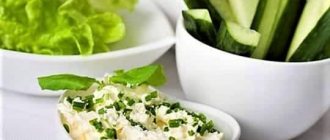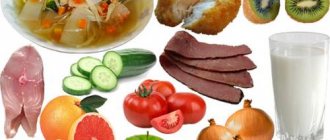The Mediterranean diet was not developed by researchers in scientific laboratories. This nutrition program has been formed over many centuries and is the heritage of different cultures and civilizations. And these are not just nice words. In 2013, UNESCO listed the Mediterranean diet as an Intangible Cultural Heritage of Humanity. In addition, the UN admitted that, no matter how strange it may sound, this diet was on the verge of extinction.
What is the Mediterranean diet
Probably, many now remembered crispy French baguettes with cheese, Italian pizza, pasta, wine and were a little taken aback. Somehow these products do not fit into what we are used to hearing about healthy eating. In addition, it is difficult to imagine that such a rich diet can serve as a preventive measure for heart disease, cancer, diabetes, and even be useful for weight loss.
We must admit that such amazement is not surprising. In fact, the traditional Mediterranean diet (in fact, the food system that UNESCO took under its wing) has less and less in common with the way modern residents of the Mediterranean region eat. This diet is based on the principles of nutrition that were followed by the grandparents of modern Italians and their neighbors. Over the past 50 years, the diet of Mediterranean residents has also come under the influence of globalization.
Content:
- What is the Mediterranean diet
- What does the diet consist of?
- Health Benefits
- Is it possible to lose weight on this diet?
- Facts and myths about the Mediterranean diet
- How to make your diet Mediterranean
- How to create the right menu
Nutrition and health experts continue to debate what the Mediterranean diet is: which foods are authentic and which have already been added due to globalization, how much and what fruits should be consumed, which legumes or grains are “native” to the Mediterranean . But all these, as they say, are details that do not significantly affect the real essence of this power system.
The Mediterranean is an amazing region that is a “link” between the West and the East. And there is nothing strange in the fact that the food culture in this region is a symbiosis of gastronomic preferences of different peoples of the world. Many of the products that are considered traditional to the Mediterranean today came to Europe from other regions. For example, Egypt made its contribution to the diet in the form of sourdough for bread, and the ancient Greeks and Romans elevated the olive tree and grapes to the rank of sacred. The Arabs shared their knowledge about fruits. Thanks to Italy, the Mediterranean diet is rich in aromatic herbs. By the way, wheat, grapes and olives are still considered the “three pillars” on which the Mediterranean diet rests. In addition, it would be strange if people who lived on the sea coast did not eat fish and seafood.
Shangri-la diet
| This is in many ways a normal diet, some nuances of which allow you to control your appetite, lose weight, but not count calories at all. |
The secret of this fashionable diet is that before each meal you need to consume a teaspoon of olive oil or a glass of water with a dissolved spoon of sugar (also a teaspoon). What exactly precedes the meal is up to you. Both butter and water with sugar are used to reduce appetite; satiety will come from smaller portions.
The Shangri-La diet essentially contains:
- the theory that aromatic foods stimulate hunger, which means you have to give them up;
- eat foods with an unexpressed aroma or even an unfamiliar taste - the amount of food desired and eaten will be lower, since interest in such a portion will not arise in the brain;
- Avoid processed foods, refined grains, and foods containing corn syrup.
- It is better to give preference to such healthy foods as fruits, vegetables, whole grains, and high-fiber foods;
- the role of sugar water and oil in providing calories, in addition, they contain taste, teaching the body not to associate taste with calories; Due to tasteless calories, the body loses interest in food, but at the same time does not feel hunger at all
Like the previous “nut” fad diet , the Shangri-La diet is not without its drawbacks. Its danger may lie in spontaneous surges in blood glucose, which is undesirable even for a healthy body. In addition, in words there may simply be a call for eating without pleasure, but this is not typical of human nature. There is also not the slightest hint of physical activity or restriction in obviously harmful components of the daily diet - all this is important in the process of any weight loss.
What does the diet consist of?
Initially, the Mediterranean diet was a set of foods that poor people living in the region could afford. That is, this is food that people could collect in their gardens, catch in the sea and cook inexpensive nutritious dishes from it.
The traditional Mediterranean diet consists of the following food groups:
- plant foods (fruits, vegetables);
- whole grain bread, cereals;
- olive oil;
- Fish and seafood.
Cereals and bread
Approximately 55-60% of the total energy value of the diet is provided by products from this group. Cereals have always been an important part of the diet of the Mediterranean people. In their diet, these foods are the main sources of carbohydrates, as well as many vitamins and minerals. In ancient times, under the influence of Egypt, wheat came to the Mediterranean and became one of the main crops. A little later, the diet expanded to include rice and corn. But traditionally, wheat and barley were on the menu, and oats were used primarily as animal feed. Thanks to grain dishes, the Mediterranean diet is beneficial for the nervous system, heart, blood vessels, and digestive organs.
Olive oil
This product is considered the hallmark of the Mediterranean diet. It is the main source of healthy fats, vitamins A and oleic acid, and phenolic compounds. It is olive oil that makes this diet unique and so beneficial for the body. Scientific research data confirm that regular use of the product effectively protects against heart disease and senile dementia; olive oil serves as a natural antibiotic and anti-inflammatory agent. In addition, this product makes the Mediterranean diet beneficial for the skin and internal organs.
Vegetables and legumes
Another important component of this ancient food system is vegetables. They serve as an excellent source of fiber, a huge amount of vitamins, micro- and macroelements, essential oils and phytocomponents. And legumes, which have been grown in the region since ancient times, are a storehouse of vegetable protein.
The presence of a large number of vegetables makes the diet beneficial for absolutely all organs and systems in the human body. Many of the traditional Mediterranean fruits have pronounced medicinal properties. This category of products is useful for losing weight, lowering cholesterol, regulating the digestive system, maintaining healthy intestinal microflora, and improving the functioning of the cardiovascular system. Vegetables rich in minerals and vitamins prevent anemia, strengthen the immune system, and have antibiotic, antiviral and anticancer properties.
Fruits and honey
The mild climate of the Mediterranean allows the cultivation of a wide variety of fruits in the region. Grapes, pears, figs, dates, pomegranates, apples, quinces, oranges and many other fruits are very popular among residents of sea coasts. Researchers suggest that the Mediterranean tradition of ending each meal with a fruit dessert has Greek roots. Another healthy treat for the region’s residents is honey. This storehouse of useful substances was borrowed from the Egyptians many centuries ago. But traditionally in the Mediterranean it is consumed in small portions and not daily.
Wine and grapes
Red wine is one of the ingredients by which the traditional Mediterranean diet is recognized. Residents of the region have always loved and regularly consumed wine rich in phytocomponents. And as the results of modern research confirm, this product in moderate portions is beneficial for the cardiac system, immunity, and also for the prevention of anemia and cancer. By the way, in ancient times in the Mediterranean, wine was consumed differently than it is today. Previously, it was customary to dilute this divine drink with water and add honey and spices to it.
Today it is allowed to drink 1-2 glasses of drink per day.
Fish and seafood
Since time immemorial, fish, seafood and algae have been the basic food products for residents of sea coasts. For many centuries they have served people as a source of iodine, vitamin D, healthy fats and protein. But if previously they consumed mainly fresh fish, today they are increasingly being replaced from the diet by less healthy canned food and semi-finished products.
Meat in the Mediterranean diet
The Mediterranean diet is not a food system in which meat is the main source of protein. Products from this category, if they appear on the menu, appear infrequently. As a rule, in the Mediterranean, red meat was consumed very rarely, and, as a rule, in the form of traditional ham. In addition to this, dietary low-fat poultry sometimes appeared on the tables.
What is the Greek diet
This is a nutrition system with a low content of animal fats and a high ratio of vegetables and fruits in the menu.
This balanced diet can be followed for many years. The Greek diet is based on the division of foods into 3 groups, the consumption of food belonging to each of them has its own characteristics. The big advantage of this method of losing weight is that there is no need to count calories, you just have to remember the allowed foods and their combination options. With this diet, excess weight disappears gradually (no more than 2 kilograms per week). If you need to lose weight quickly, choose a short version of the Greek diet, designed for 3-5 days. During this time, a person loses from 4 to 7 kilograms. A gentler method of body shaping involves following a diet menu for 14 days. When choosing this method to lose weight, you can count on an answer of 10 kg.
The Greek diet consists of 60% carbohydrates, 10% protein and 30% fat. The gradual loss of fat reserves allows you to lose excess weight in a safe way. The nutrition system does not have a strict menu and meal schedule: weight reduction is carried out through the formation of healthy eating habits and normalization of metabolism, while the person losing weight does not feel an acute feeling of hunger.
The method is based on the consumption of fruits and vegetables rich in vitamins and fiber. Pasta, cereals, and beans provide those losing weight with the necessary amount of carbohydrates, while the main source of protein is fish. Meat products are almost completely excluded from the menu. The benefits of giving up meat are:
- normalization of the stomach and intestines;
- reducing the level of bad cholesterol;
- stabilization of kidney function.
The results of the Greek diet are not immediately noticeable, but a person’s well-being improves after only a week of following such a diet. The weight begins to slowly go away: its loss depends on the initial parameters of the person losing weight (the minimum weekly weight is 0.5-2 kg). The Greek version of nutrition involves eating the heaviest food in the first half of the day, when it is completely digested, without remaining in the form of new folds on the body. Lunch and dinner should provide the body with the necessary minerals and vitamins, so it consists mainly of fresh fruits.
Basic diet rules
The Greek method of losing weight is a common eating style for residents of the Mediterranean coast, many of whom are centenarians. Their menu is rich in nuts, seafood, fruits and vegetables. The Greek diet involves eating foods that are divided into several groups. The first category includes food that is allowed to be eaten daily, the second category consists of foods that are allowed to be consumed up to 4 times a week, the third group includes food that appears in the diet no more than 3 times a month. The first group includes:
- cereals;
- legumes;
- dairy, fermented milk products;
- durum wheat pasta;
- fruits vegetables;
- olive oil;
- seeds, any nuts;
- cheese;
- red dry wine.
If you do not drink alcoholic beverages, then you should not drink wine. Otherwise, it will serve as a less harmful alternative to beer and other types of alcohol. The second group of products includes:
- sweets;
- eggs;
- seafood;
- fish.
The third group consists of different types of meat - turkey, chicken (or chickens), rabbit, lean lamb, pork, veal. The developers of this diet emphasize that these products should be present on the menu with such frequency, since otherwise you will not lose weight. If you follow the proposed nutritional system, the body will receive all the necessary components, gradually cleansing itself and getting rid of excess weight. The main requirements of the Greek diet are:
- minimizing the consumption of sugar and salt;
- limiting smoked, fatty, flour products;
- eating carbohydrate foods for breakfast;
- fruits and berries as snacks;
- permission to periodically drink unsweetened coffee, green tea;
- compliance with daily caloric intake (no more than 1500 kcal);
- serving weight limit – maximum 250 g;
- use extra virgin olive oil daily, but not more than 1-3 tbsp. l.;
- mandatory compliance with the drinking regime, in which you need to drink at least 1.5 liters of water daily;
- drinking dry red wine (for women – up to 2, for men – up to 3 glasses);
- consumption of vegetable fats, the sources of which, in addition to olive oil, are seeds, nuts, and avocados;
- limiting potato consumption;
- protein foods should be consumed at lunch and dinner, and such food should be combined with stewed or raw vegetables;
- regular sports, physical activity;
- no need to follow a strict meal schedule.
Choosing a specific type of Greek diet depends on how quickly and how much weight you need to lose. For example, if you urgently need to lose 3 to 6 kg, a 14-day diet plan will come to the rescue. If you want to lose weight gradually and without harm to your health, you can follow a moderate diet for a longer time or even eat this way all the time.
Advantages and disadvantages
The Greek nutritional system has a lot of advantages, the main one of which is its versatility, thanks to which the diet is suitable for a wide range of overweight people; there are practically no contraindications (with the exception of food allergies to basic types of foods). Other advantages of the Greek method are:
- improvement of metabolism, general health (as a result, skin, nails, and hair become healthier);
- easy tolerability of the diet;
- varied, rich selection of products;
- gradual loss of extra pounds without harm to health;
- there is no time frame for eating, so the diet is convenient for working people;
- intake of a sufficient amount of vitamins and other useful substances into the body;
- absence of debilitating feelings of hunger.
The key disadvantage of the Greek nutrition system is the lack of quick results in losing weight. This diet is not suitable for emergency weight loss. The second disadvantage of the Greek diet for people trying to lose weight is the financial cost. Most foods from the first group (those that should be eaten daily), including fruits, olive oil, seafood, and nuts, are expensive.
Health Benefits
The true Mediterranean food system is based on the dietary traditions of 13 countries located on the coasts of the sea. This food system was followed for centuries in Italy, Greece, Spain, the south of France and the Balkans, Morocco, Tunisia, Turkey, Lebanon and Syria. But it was only in the 1960s that researchers noticed that residents of the Mediterranean region were less likely than others to suffer from heart disease, obesity, diabetes and cancer. In addition, their life expectancy is much longer. As it turned out, the reason for this phenomenon lies in the special diet that the local population adheres to. Since the second half of the twentieth century, researchers from all over the world began to more seriously study the features of this nutritional system and its effect on the human body.
The traditional Mediterranean diet consists of large amounts of fresh fruit, fish, and olive oil, which, when combined with physical activity, have a beneficial effect on health.
Prevents cardiovascular diseases
Refusal of red meat in favor of seafood, consumption of olive oil, a huge amount of fresh vegetables, fruits and a little red wine made the Mediterranean diet incredibly beneficial for the heart and blood vessels. By following this nutritional system, you can prevent hypertension, atherosclerosis, reduce the level of bad cholesterol and increase good cholesterol, prevent excessive formation of blood clots, as well as the development of atherosclerosis. In addition, eating according to the Mediterranean system improves blood circulation and strengthens blood vessels.
Supports Energy
Many people pay attention to the fact that pensioners from Mediterranean countries look pretty good for their age and lead a very active lifestyle. Researchers attribute this to proper nutrition. The traditional diet of these people is rich in a variety of nutrients that serve as a good source of energy and also maintain muscle tone.
Increases life expectancy
This benefit is closely related to another benefit of the diet - its ability to reduce the risk of heart disease and cancer. Scientific research confirms that those who follow a Mediterranean diet have a 20% lower risk of sudden death.
Prevents Alzheimer's disease and degenerative diseases
This nutritional system helps improve cognitive functions of the brain, reduces the risk of developing multiple sclerosis, Parkinson's disease, senile dementia, and Alzheimer's disease. Researchers explain this by consuming large amounts of olive oil and nuts, which have strong antioxidant properties and improve blood flow to the brain, improving its function. In addition, the Mediterranean diet has neuroprotective properties, making it an effective protection against stroke, peripheral neuropathy, and impaired brain function.
This nutritional system is considered very useful for older people, as well as for people with low stress tolerance.
Protects against respiratory diseases
Recently, researchers are increasingly finding evidence that the Mediterranean diet is a good way to boost immunity, as well as protect against lung infections and respiratory diseases. Studies have shown that this diet is very beneficial for smokers, as a special set of foods prevents chronic obstructive pulmonary disease (COPD).
Reduces the risk of cancer
This is one of the most well-known benefits of the Mediterranean diet. Data from scientific experiments indicate that eating according to this scheme can prevent some types of cancer, including stomach, intestinal, and breast cancer.
Protects against diabetes
The predominance of fiber-rich vegetables in the diet makes it useful for the prevention of diabetes. Dietary fiber helps regulate blood sugar levels. In addition, eating according to this scheme is useful for people already suffering from diabetes, as it reduces cholesterol levels, improves blood circulation, and prevents capillary fragility.
Other useful properties:
- improves thyroid function;
- regulates metabolic processes;
- prevents rickets in children and osteoporosis in adults;
- improves bone mineralization.
Greek salad diet
In practice, other nutrition systems based on Greek dishes are also used. Thus, a nutritional system based on a nutritious Greek salad is also very popular. The product can be considered dietary and low-calorie, as well as healthy, however, following a strict diet on Greek salad is not recommended for more than a week. The menu for each day is as follows:
- Any vegetable dish (stew, salad);
- Sliced avocado, a cup of fruit and some nuts of any kind;
- Lunch includes a traditional salad and a portion of boiled chicken;
- Any vegetable dish.
You are allowed to drink green tea without additives, rosehip decoction, still water in any quantity. If you feel very hungry, you can also eat fresh vegetables.
Is it possible to lose weight on this diet?
Research shows that people who follow a Mediterranean diet and exercise do not have problems with excess weight. And all because this system is based on the principles of proper and healthy nutrition.
The basic rules of the Mediterranean diet are to eat small meals and meals. The main emphasis is on fiber-rich plant foods and proteins, which are useful for both burning fat and gaining muscle mass. Most Mediterranean recipes are a healthy combination of meat and plant foods, and contain a minimum of harmful additives and sugar. Another advantage of this nutrition system is drinking plenty of fluids. While following the diet, you need to drink at least 6 glasses of pure still water every day. And water, as you know, is the best assistant for losing weight and cleansing the body of toxins.
Based on the Mediterranean nutrition system, nutritionists have developed more strict diets for weight loss. For example, there is the “Three Soups” diet, the essence of which is to consume one of the traditional Mediterranean dietary soups for lunch and dinner: gazpacho, minestrone or pesto for a certain period of time (from a week to 21 days). In addition to soups, during the period of weight loss you can include fish, low-fat cottage cheese, poultry and a lot of vegetables in your menu. And I must say that the reviews about this diet are only positive.
Nut diet
| This is a diet from the category that includes a diet with an emphasis on a specific product, in this case it is nuts and... peanut butter. |
Who should I recommend the “nut” fashion diet ? Of course, for nut lovers and those with a sweet tooth. Its leading component turns out to be peanut butter, which at first glance is not the most dietary product. The secret is that peanut butter is used to satisfy hunger and a person will not be inclined to consume other harmful things.
What is the essence of the “nut” fashion diet ?
- It is necessary to replace animal proteins in the diet with plant proteins - the same emphasis on nuts, they are added to every serving of food, but its weight is certainly limited to 250 grams in total.
- You can eat porridge as a main dish (nuts are just an addition), drink juices and compotes without sugar.
- It is acceptable to resort to consuming a small portion of high-quality peanut butter when you feel hungry. For those who don’t like it or don’t find it healthy, you can replace a serving of peanut oil with olive, coconut or chopped nuts. The goal is to satisfy the feeling of hunger.
- You will have to exclude sweets and starchy foods from your diet; we replace these products with dried fruits and nuts, herbs and vegetables; It’s better to avoid fruits too.
How healthy is this trendy diet ? First of all, it should be said that it is very limited, especially since nuts are not the most easily digestible and suitable product for everyone. The nut diet should not last more than 10 days. It can be practiced regularly, but you will have to do it in between. They claim that such a diet allows you to lose 1 kg of weight in the same 10 days.
The “nut” fashionable diet also has a number of contraindications. They are associated with the same emphasis on nuts and with sufficient restriction of the diet. It is not recommended to experiment with fad diets:
- persons with diseases of the digestive tract, because nuts are difficult to digest;
- persons with allergies or individual intolerance to nuts;
- patients with psoriasis or eczema, since some components of nuts can provoke or aggravate the disease;
- persons with intestinal problems and problems with the pancreas;
- persons who are overweight or predisposed to it;
- Excessive consumption of nuts can lead to liver enlargement.
- Certain types of nuts are contraindicated for high heart rates (almonds), diabetes and liver disease (hazelnuts).
Facts and myths about the Mediterranean diet
Many people know that the Mediterranean diet is healthy. But in addition to true information, there are also many myths about it.
Myth 1: Following the Mediterranean diet is expensive.
In fact, following the nutritional principles of a true Mediterranean diet is not as expensive as some people think. Moreover, initially this diet was a set of products from the diet of the Italian poor. For a modern person, to make their diet closer to the Mediterranean diet, it is enough to include in the menu, for example, beans or lentils, which will serve as a source of plant protein, and also focus on plant-based vegetables and whole grains. And these products, by the way, are much cheaper than many of the unhealthy but beloved semi-finished products.
Myth 2: Red wine is healthy in any quantity
In reality, only moderate consumption of red wine is beneficial. Experts have long ago determined what “moderate” means. For women, this is one glass of wine a day, for men, a maximum of two. Just by not exceeding these standards, you can count on the beneficial effects of red wine on the body, in particular on the cardiovascular system.
Myth 3: A large portion of spaghetti and a lot of bread is the Mediterranean diet
In fact, it is very difficult to find an Italian who consumes pasta in huge quantities. A traditional serving of spaghetti or other pasta is 55-60 g, and a serving of 80 g of pasta is already considered very large. This amount of pasta on a plate will take up very little space. True adherents of the Mediterranean diet will devote most of the plate to fresh vegetables, salads, fish or dietary meat.
They also rarely eat more than one slice of bread, and they also choose whole grain products.
Myth 4: The Mediterranean diet is just a collection of foods.
Mediterranean people take the choice of foods for their diet very seriously. They carefully plan the menu for the week. And few of them will eat the finished dish in a hurry or in front of the TV. For Mediterranean people, food is an important part of life. But not the most important one. Following the Mediterranean diet involves not only eating a certain list of foods, but also following a special way of life, an important part of which is high physical activity.
Myth 5: All vegetable oils are equally good
Vegetable fats are in many cases more beneficial than animal fats. But even in this category there are more and less useful products. The Mediterranean diet is best followed by using cold-pressed olive or peanut oil. Both products contain monounsaturated fatty acids, which are known for their wide range of health benefits. It is better to add olive oil to salads and not expose it to heat. And for frying, it is better to take other types, including peanut, sunflower, corn, rapeseed, cottonseed, and safflower.
Diet for two weeks
The entire nutrition system of the two-week Greek diet is built on the principle of protein-vitamin alternation. This means that one seven days of the course will be on protein foods, another seven days on plant foods. The diet itself is quite simple and consists of repeating three days. The menu for the first day will look like this:
- A cup of unsweetened coffee. Sandwich with salty cheese.
- A cup of plain yogurt, sweetened with a spoonful of honey;
- Vegetable salad based on bell peppers and onions with a small chicken steak without oil, water;
- The afternoon snack is the same in composition as breakfast;
- Grilled fish steak, tea.
Menu for the second day:
- Vegetable salad without oil, tea;
- One tomato and fresh cucumber;
- Kefir soup with fresh vegetables, one potato (boiled or baked);
- A cup of Greek salad;
- Herbal tea, a portion of zucchini baked with tomatoes.
Diet on the third day of the course:
- A large cup of kefir or yogurt without sweet fillings, a portion of low-fat cottage cheese;
- Cucumber salad without oil (lemon juice dressing is allowed);
- A couple of tomatoes, grilled fish steak;
- Thin flatbread with tomato and a slice of salty cheese;
- Vegetable casserole with minced meat.
Be sure to read: How to force yourself to go on a diet at home?
The diet can be repeated no more than once every six months. To maintain the results, it is recommended to switch to a proper nutrition system immediately after completing the course. The diet does not require a special “exit”.
How to make your diet Mediterranean
You should never switch to a new power system suddenly. This advice remains relevant in the case of the Mediterranean diet. In order for the body to accept the transition to a new menu painlessly, nutritionists advise following several rules.
Eat more vegetables. Before switching your body completely to a Mediterranean diet, it is advisable to gradually accustom it to eating a large amount of vegetables. The easiest way: replace your usual snacks with salads. For example, instead of sandwiches throughout the day, you can make a healthier salad with tomatoes, feta and a little olive oil.
In addition to salads, it is important to introduce more vegetable soups into your diet.
Don't skip breakfast. This is one of the most important rules of healthy eating. The Mediterranean diet includes a proper breakfast. That is, the first meal should consist of foods rich in fiber. The best choices are fruits and whole grains. By the way, if your breakfast consists of a cup of coffee and a sandwich, then it is better to use whole grain bread.
Best materials of the month
- Coronaviruses: SARS-CoV-2 (COVID-19)
- Antibiotics for the prevention and treatment of COVID-19: how effective are they?
- The most common "office" diseases
- Does vodka kill coronavirus?
- How to stay alive on our roads?
Seafood twice a week. And this is one of the favorite tips of all cardiologists. After all, sea fish and shellfish contain huge amounts of omega-3 fatty acids, which are essential for the healthy functioning of the heart and blood vessels. Tuna, salmon, herring, sardines or cod - the type of fish does not really matter, the main thing is that it is marine. In addition to this, it would be nice to pamper your body with shellfish, which also contain a huge amount of useful components.
One day of vegetarianism. This is another trick that will help train your body to eat like a real Mediterranean resident. Once a week, you should completely exclude animal products from your diet. Instead, eat beans, grains and plenty of vegetables. When the body gets used to this regime, you can add another vegetarian day. As for red meat, ideally its consumption should be reduced to 450 g per month, and about 1 kg of chicken per 30 days is allowed.
Eat the right fats. The right fats, from the point of view of nutritionists and adherents of the Mediterranean diet, are olive oil, olives, avocados, nuts, and seeds. From these foods, the body will receive all the necessary fatty acids and avoid harmful saturated fats. The body should be accustomed to olive oil gradually, replacing it with other more familiar types of vegetable fat.
Don't forget about dairy products. Dairy products contain some substances that the body cannot get from other foods. The Mediterranean diet, as the most healthy food system, does not exclude cheeses (remember France with its amazing blue cheeses or Italy with its mozzarella or Parmesan), yoghurts (the most popular Greek) and other fermented milk products. But they should not be abused either. 1 glass of yogurt or milk and about 30 g of cheese per day are considered beneficial for health.
And for dessert - fruit. Ice cream, cakes with rich creams, rich pastries - all this is prohibited. Instead of these unhealthy desserts, slim, healthy residents of the Mediterranean region choose strawberries, fresh figs, grapes, apples and other delicacies.
Sandwich diet
| Another fashion trend. Otherwise it is called bread. It would seem that what kind of weight loss are we talking about when the emphasis in the diet is on bread. The secret is that we don’t eat just any bread, but exclusively whole grain, bran or diet bread. |
The duration of the “sandwich” fashion diet should not exceed two weeks, although it can be one week or 10 days. The amount of bread per day (even low-calorie bread) should not exceed ½ kilogram. Favorite, non-calorie foods complement the taste and calorie content of the meal. They are placed in a sandwich in thin slices. The time between meals usually does not exceed several hours.
What is the essence of the “sandwich” fashion diet ?
- During the day, a woman can eat up to 12 sandwiches, a man - up to 16;
- the interval between meals should not exceed 2-3 hours;
- the sandwich menu can be varied with salads and puree soups, but the portions should be very small;
- As for the sandwiches themselves, there is also a list of requirements for their preparation:
- the bread itself has already been mentioned - whole grain, bran, diet bread;
- Hummus, peanut butter, cottage cheese, and vegetables are allowed as fillings;
- only on certain days, not daily, fish, turkey, chicken breast can be used as filling - 3-4 times a week;
- there should not be a lot of filling, but only a thin layer; a slice of gleb should also not be thick and weighty - no more than 15 grams;
- between meals it is recommended to drink clean water, freshly squeezed juices, green tea; coffee is excluded.
How healthy is the sandwich diet? What is noteworthy is that as a result of such a balanced diet, in a few weeks you can get rid of 3 kilograms, which is a lot. The range of permitted sandwiches is quite large, and the abundance of complex carbohydrates can relieve irresistible cravings for sweets. If desired, you can include salads and puree soups in your diet. Following such a diet is not difficult. Excessive consumption of sandwiches can negatively affect the health of the intestines.
How to create the right menu
Mediterranean cuisine is unique in that it is both very healthy and incredibly tasty. This is the case when we eat delicacies and at the same time lose weight, improve our health, and improve our appearance.
Recommended daily portions of foods:
- vegetables – 100 g of leafy vegetables and 50 g of others;
- potatoes – 100 g;
- legumes – 100 g;
- nuts – 30 g;
- fruits – 1 apple, 1 banana, 1 orange, 200 g melon or watermelon, 30 g grapes (optional);
- fish (or lean meat) – 60 g;
- cereals – 50-60 g of pasta or rice, 25 g of bread;
- dairy products - 1 glass of milk or yogurt, 30 g of cheese;
- eggs - 1 piece;
- wine – 125 ml dry red wine.
Sample menu for the week in the table
| Monday | |
| Breakfast | A glass of milk, bread with olive oil and a few slices of cheese, an apple |
| Dinner | Arugula salad, turnip soup, potatoes with spinach, baked mackerel, fruit |
| Snack | Slice of whole grain bread with apricot jam |
| Dinner | Omelet with asparagus, medlar |
| Tuesday | |
| Breakfast | Hercules with Greek yogurt and strawberries, mint tea |
| Dinner | Tomato salad, fried chicken, chickpeas with spinach, persimmon jelly |
| Snack | Pear |
| Dinner | Escalivada, slice of whole grain bread with tomatoes, tuna with goat cheese, 2-3 apricots |
| Wednesday | |
| Breakfast | A glass of milk, a few slices of cheese, whole grain bread, a peach |
| Dinner | Gazpacho, omelette, fruit |
| Snack | Cottage cheese with walnuts and honey |
| Dinner | Broccoli omelette, zucchini puree, bunch of grapes |
| Thursday | |
| Breakfast | 100 ml orange juice, muesli, glass of milk or herbal tea |
| Dinner | Couscous, stewed mushrooms with garlic, sardines, baked apple |
| Snack | Horchata |
| Dinner | Hummus, anglerfish with almonds, 2-3 plums |
| Friday | |
| Breakfast | Carrot-apple juice, milk pudding |
| Dinner | Garlic soup, gnocchi with pesto sauce, fried dorado, endive salad, fruit |
| Snack | Bread with cheese, a handful of cherries |
| Dinner | Omelet with artichoke, peach |
| Saturday | |
| Breakfast | Slice of whole grain bread, tomatoes, mozzarella |
| Dinner | Baked lamb meat, salad, rice, grapefruit |
| Snack | Fruit salad |
| Dinner | Whole grain bread, cheese with nuts, papaya |
| Sunday | |
| Breakfast | Muesli, Greek yogurt, apple juice |
| Dinner | Tomato soup, fried salmon with sour cream sauce, salad, rice |
| Snack | Low-fat cheese, slice of bread |
| Dinner | Lentils with vegetables, mint tea |
Canned olives, baked artichokes, stuffed eggplants, stewed asparagus and fried broccoli, mushroom dishes, hundreds of salads and soups, as well as a lot of fish and seafood dishes. All this and many other dishes constitute Mediterranean nutrition. Based on the huge list of products allowed in the diet, it is not at all difficult to create original menus for a week or longer. But it is important to consider that the daily nutrition plan should consist of 4-5 meals.
The Mediterranean diet is not just a set of products, but a lifestyle, following which you can significantly improve your health, get rid of extra pounds and turn into a connoisseur of healthy and tasty food. Many celebrities base their nutritional system on the Mediterranean diet. They say that star beauties Penelope Cruz, Britney Spears and Cindy Crawford have been keeping themselves in shape for many years using this nutrition system.
More fresh and relevant information about health on our Telegram channel. Subscribe: https://t.me/foodandhealthru
We will be grateful if you use the buttons:
Menu for 5 days
The Greek diet for weight loss allows you to quickly but safely lose weight. The course lasts only 5 days, during which up to 7 kg are lost. The diet includes vegetables, herbs, fruits, low-fat dairy products, meat, and fish. Salt and sugar are strictly prohibited. Menu for weight loss:
1 day:
- On the first day, apple, orange and pear for breakfast (salad is allowed);
- For lunch, a vegetable salad and a portion of stewed fish;
- Boiled vegetables for dinner.
Day 2:
- On the second day we have breakfast with natural yogurt with berries as a snack;
- For the second meal, a piece of boiled chicken breast, a couple of tomatoes (cut and sprinkled with black pepper);
- Greek salad for dinner.
Day 3:
- On the third day, we start the morning with dessert: beat an apple and the pulp of two peaches in a blender;
- For lunch, two fresh cucumbers and 200 gr. low-fat cottage cheese;
- For dinner, fish fillet and vegetable side dish.
Day 4:
- On the fourth day for breakfast one orange and half a grapefruit;
- For lunch, a salad of grated carrots and a piece of veal;
- For dinner, a salad of two fresh cucumbers and one tomato with feta cheese.
Day 5:
- On the fifth day, fruit puree for breakfast;
- For lunch, radish salad with a piece of fish fillet;
- For dinner, a couple of fresh cucumbers, a glass of kefir and an apple.
This diet allows two snacks, which include fresh vegetables or fruits, or natural juice, but not more than 1 glass. Drink 2 liters of liquid per day. In addition, green, black and herbal tea, one cup of coffee in the morning are allowed.











